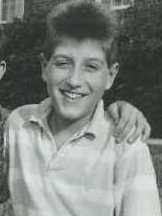
Ryan Wayne White was an American teenager from Kokomo, Indiana, who became a national poster child for HIV/AIDS in the United States after his school barred him from attending classes following a diagnosis of AIDS.

The AIDS epidemic, caused by HIV, found its way to the United States between the 1970s and 1980s, but was first noticed after doctors discovered clusters of Kaposi's sarcoma and pneumocystis pneumonia in homosexual men in Los Angeles, New York City, and San Francisco in 1981. Treatment of HIV/AIDS is primarily via the use of multiple antiretroviral drugs, and education programs to help people avoid infection.

Gaëtan Dugas was a Québécois Canadian flight attendant whose role in the early years of the AIDS epidemic attracted considerable attention. Initially identified as a central figure labeled "Patient Zero" Dugas faced allegations of being a primary source of HIV transmission to the United States. This narrative, popularized notably by Randy Shilts' 1987 book And the Band Played On, has been refuted through subsequent scientific scrutiny and historical re-evaluation. Dugas' story highlights the perils of misinformation and the stigma surrounding HIV/AIDS in the 1980s. Despite facing criticism in popular discourse, subsequent studies have provided a more nuanced understanding of Dugas' impact on the epidemic, emphasizing the importance of accuracy and empathy in public health narratives.

Zero Patience is a 1993 Canadian musical film written and directed by John Greyson. The film examines and refutes the urban legend of the alleged introduction of HIV to North America by a single individual, Gaëtan Dugas. Dugas, better known as Patient Zero, was the target of blame in the popular imagination in the 1980's in large measure because of Randy Shilts's American television film docudrama, And the Band Played On (1987), a history of the early days of the AIDS epidemic. Zero Patience tells its story against the backdrop of a romance between a time-displaced Sir Richard Francis Burton and the ghost of "Zero".
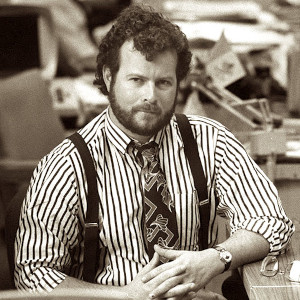
Randy Shilts was an American journalist and author. After studying journalism at the University of Oregon, Shilts began working as a reporter for both The Advocate and the San Francisco Chronicle, as well as for San Francisco Bay Area television stations. In the 1980s, he was noted for being the first openly gay reporter for the San Francisco Chronicle.
This is a timeline of HIV/AIDS, including cases before 1980.

AIDS is caused by a human immunodeficiency virus (HIV), which originated in non-human primates in Central and West Africa. While various sub-groups of the virus acquired human infectivity at different times, the present pandemic had its origins in the emergence of one specific strain – HIV-1 subgroup M – in Léopoldville in the Belgian Congo in the 1920s.
Donald Pinkston Francis is an American epidemiologist who worked on the Ebola outbreak in Africa in the late 1970s, and as an HIV/AIDS researcher. He retired from the U.S. Public Health Service in 1992, after 21 years of service. He lives in San Francisco, California.
William Ward Darrow is a professor of public health at Florida International University.
The index case or patient zero is the first documented patient in a disease epidemic within a population, or the first documented patient included in an epidemiological study. It can also refer to the first case of a condition or syndrome to be described in the medical literature, whether or not the patient is thought to be the first person affected. An index case can achieve the status of a "classic" case study in the literature, as did Phineas Gage, the first known person to exhibit a definitive personality change as a result of a brain injury.
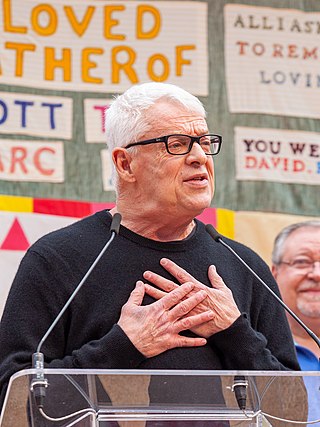
Cleve Jones is an American AIDS and LGBT rights activist. He conceived the NAMES Project AIDS Memorial Quilt, which has become, at 54 tons, the world's largest piece of community folk art as of 2020. In 1983 at the onset of the AIDS pandemic, Jones co-founded the San Francisco AIDS Foundation, which has grown into one of the largest and most influential advocacy organizations empowering people with AIDS in the United States.

William James Kraus was an American gay-rights and AIDS activist as well as a congressional aide who served as liaison between the San Francisco gay community and its two successive US representatives in the early 1980s.

Marcus Augustine Conant is an American dermatologist and one of the first physicians to diagnose and treat Acquired Immune Deficiency Syndrome (AIDS) in 1981. He helped create one of the largest private AIDS clinics, was a founder of the San Francisco AIDS Foundation, and his work contributed to development of some of today's top HIV medications. He has written over 70 publications on the treatment of AIDS.
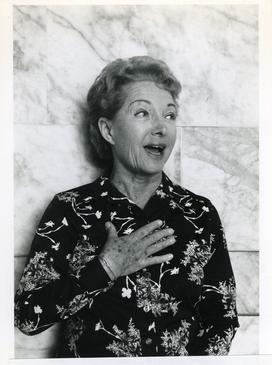
Selma Kaderman Dritz was an American physician and epidemiologist who worked in San Francisco, California, where she began tracking the first known cases of Acquired Immune Deficiency Syndrome (AIDS) in the early 1980s.

And the Band Played On: Politics, People, and the AIDS Epidemic is a 1987 book by San Francisco Chronicle journalist Randy Shilts. The book chronicles the discovery and spread of the human immunodeficiency virus (HIV) and acquired immune deficiency syndrome (AIDS) with a special emphasis on government indifference and political infighting—specifically in the United States—to what was then perceived as a specifically gay disease. Shilts's premise is that AIDS was allowed to happen: while the disease is caused by a biological agent, incompetence and apathy toward those initially affected allowed its spread to become much worse.
Michael Stuart Gottlieb is an American physician and immunologist known for his 1981 identification of acquired immune deficiency syndrome (AIDS) as a new disease, and for his HIV/AIDS research, HIV/AIDS activism, and philanthropic efforts associated with HIV/AIDS treatment.

Sandy Ford was a drug technician for the Centers for Disease Control in Atlanta, Georgia. In April 1981, she identified unusual clusters of young homosexual patients in New York and California with pneumocystis pneumonia and Kaposi's sarcoma and alerted her supervisor about it. Those patients had HIV/AIDS; pneumocystis pneumonia and Kaposi's sarcoma were later found to be AIDS-defining diseases.
James W. Curran is professor of epidemiology and dean of the Rollins School of Public Health at Emory University. He is an adjunct Professor of Medicine and Nursing, and Co-Director and Principal Investigator of the Emory Center for AIDS Research. He is immediate past chair of the board on Population Health and Public Health Practice of the Institute of Medicine and served on the Executive Committee of the Association of Schools of Public Health. Additionally, he holds an endowed chair known as the James W. Curran Dean of Public Health. Curran is considered to be a pioneer, leader, and expert in the field of HIV/AIDS.
New York City was affected by the AIDS epidemic of the 1980s more than any other U.S. city. The AIDS epidemic has been and continues to be highly localized due to a number of complex socio-cultural factors that affect the interaction of the populous communities that inhabit New York.
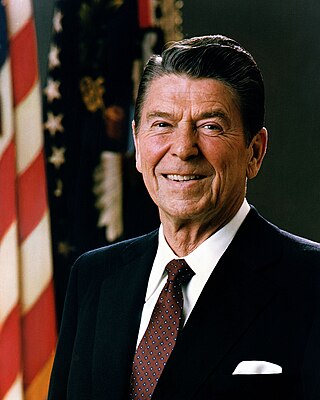
Ronald Reagan, the 40th President of the United States, oversaw the United States response to the emergence of the HIV/AIDS crisis during the 1980s. His actions, or lack thereof, have long been a source of controversy and have been widely criticized by LGBT and AIDS advocacy organizations.













